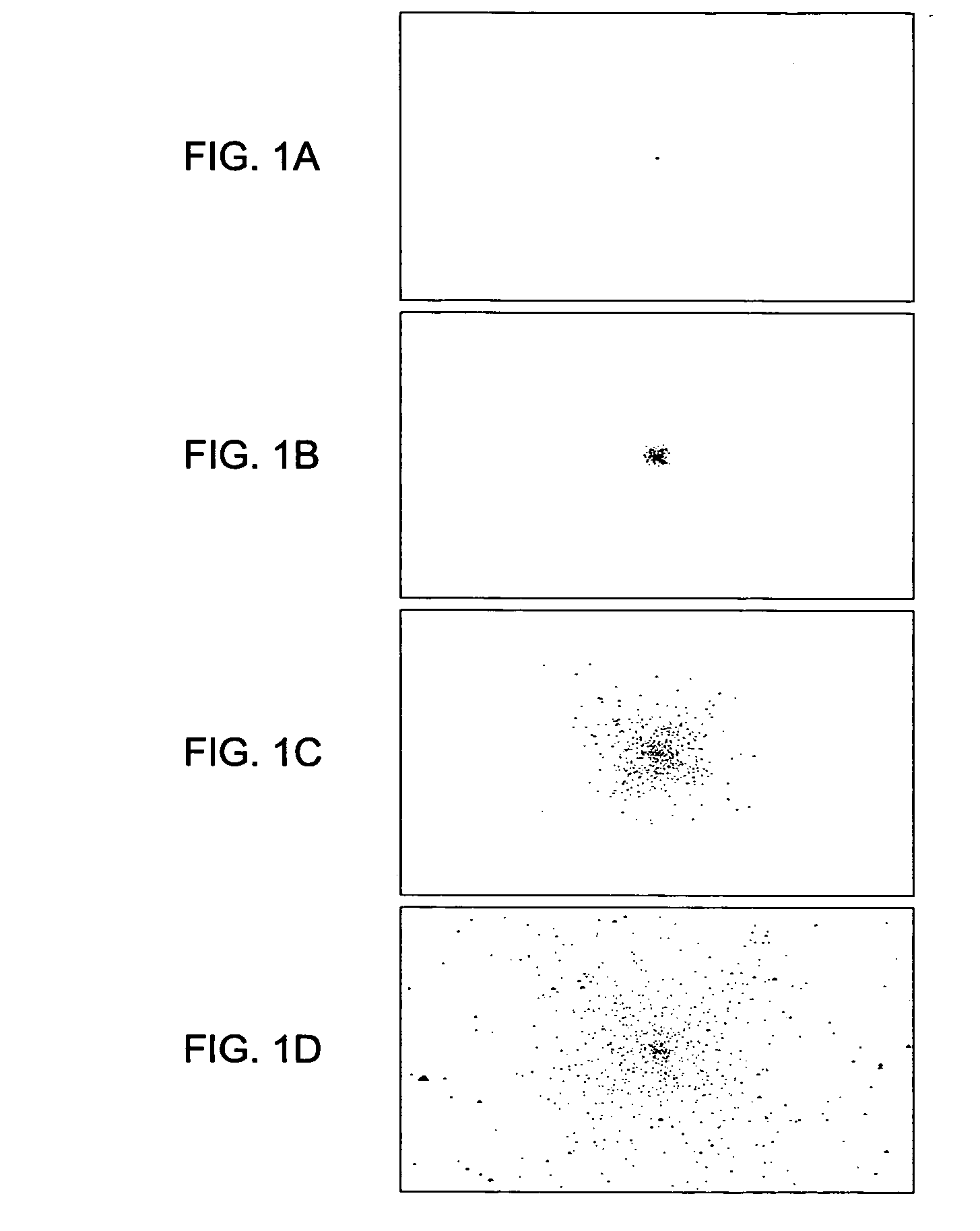Configurable particle system representation for biofeedback applications
a technology of biofeedback and particle system, applied in the field of biofeedback, can solve the problems of user loss of interest, difficulty in displaying, user dissatisfaction, etc., and achieve the effect of easy user understanding
- Summary
- Abstract
- Description
- Claims
- Application Information
AI Technical Summary
Benefits of technology
Problems solved by technology
Method used
Image
Examples
Embodiment Construction
—PREFERRED EMBODIMENT
[0070] A preferred embodiment of the configurable particle system representation for biofeedback applications is as follows:
[0071] The embodiment is a computer program written in the programming language C++ that displays a collection of three-dimensional objects on a two-dimensional computer screen. These objects contain properties such as location, direction, speed, shape, color, image, transparency, and lifetime. The computer program uses this information to continuously update and display each object. For instance, the location is continuously updated based on the current direction. The direction could be fixed (object moves in a single direction) or could be constantly changing based on an equation (object continuously changes the direction of its movement). These objects are subsequently referred to as particles and a collection of all of these particles is referred to as a particle system.
[0072] In this program, the particles have one or more properties...
PUM
 Login to View More
Login to View More Abstract
Description
Claims
Application Information
 Login to View More
Login to View More - R&D
- Intellectual Property
- Life Sciences
- Materials
- Tech Scout
- Unparalleled Data Quality
- Higher Quality Content
- 60% Fewer Hallucinations
Browse by: Latest US Patents, China's latest patents, Technical Efficacy Thesaurus, Application Domain, Technology Topic, Popular Technical Reports.
© 2025 PatSnap. All rights reserved.Legal|Privacy policy|Modern Slavery Act Transparency Statement|Sitemap|About US| Contact US: help@patsnap.com



